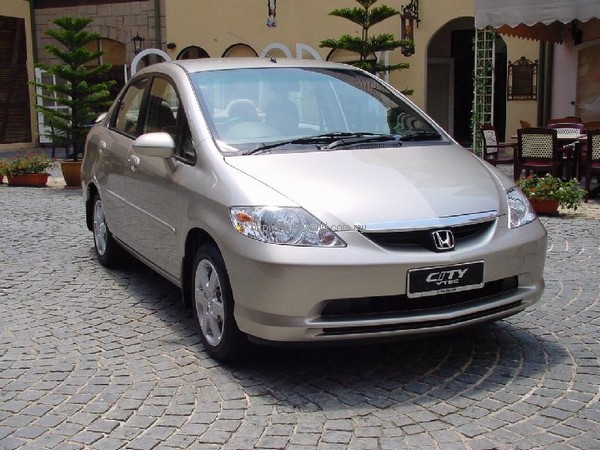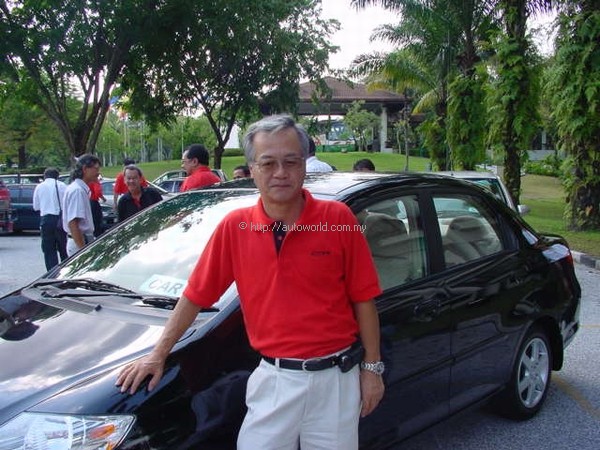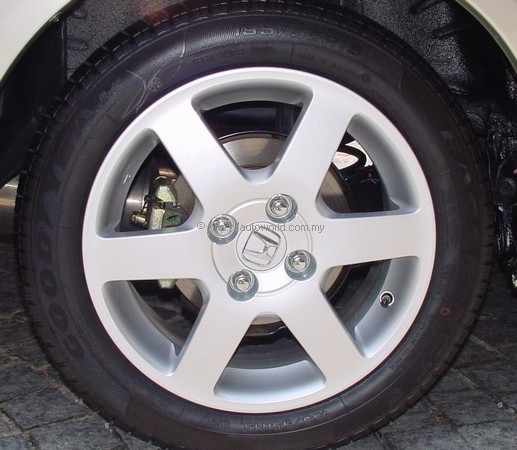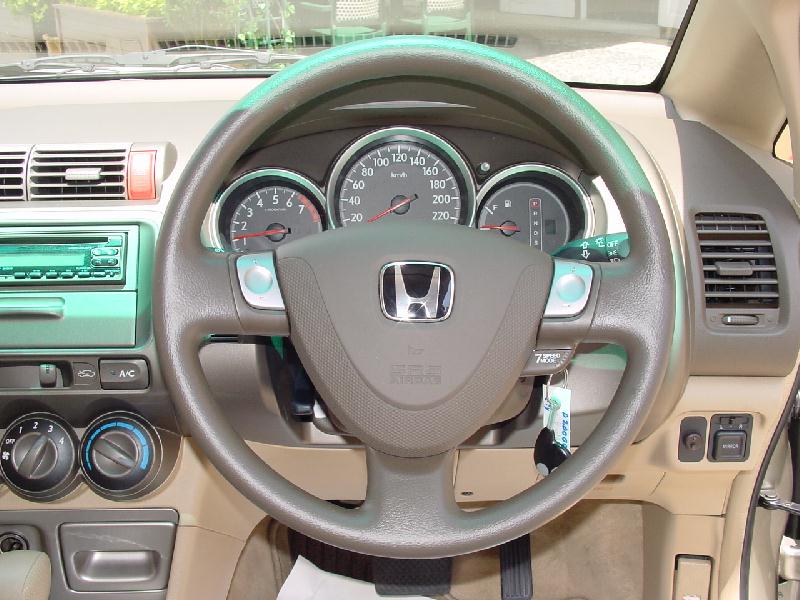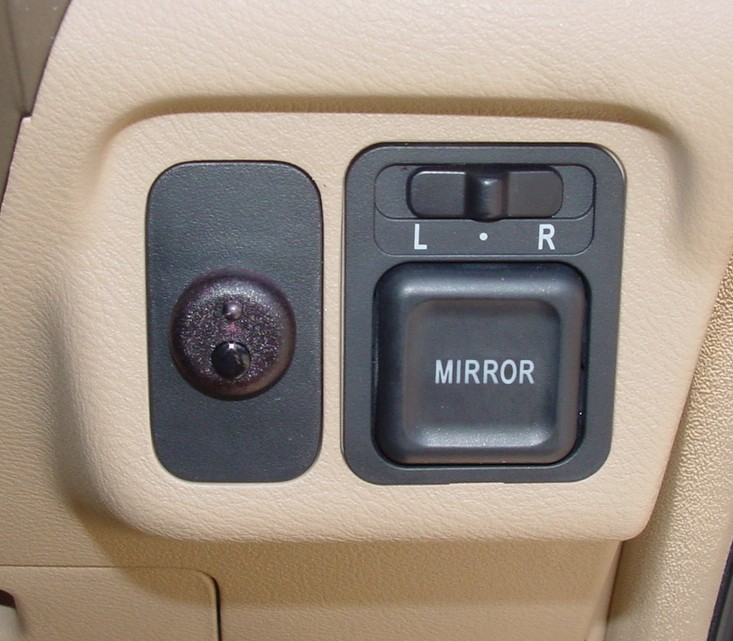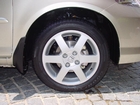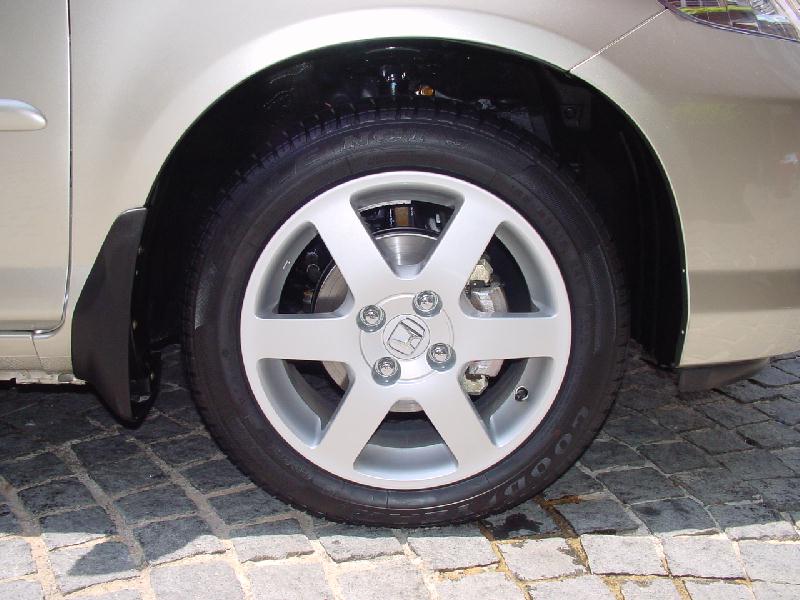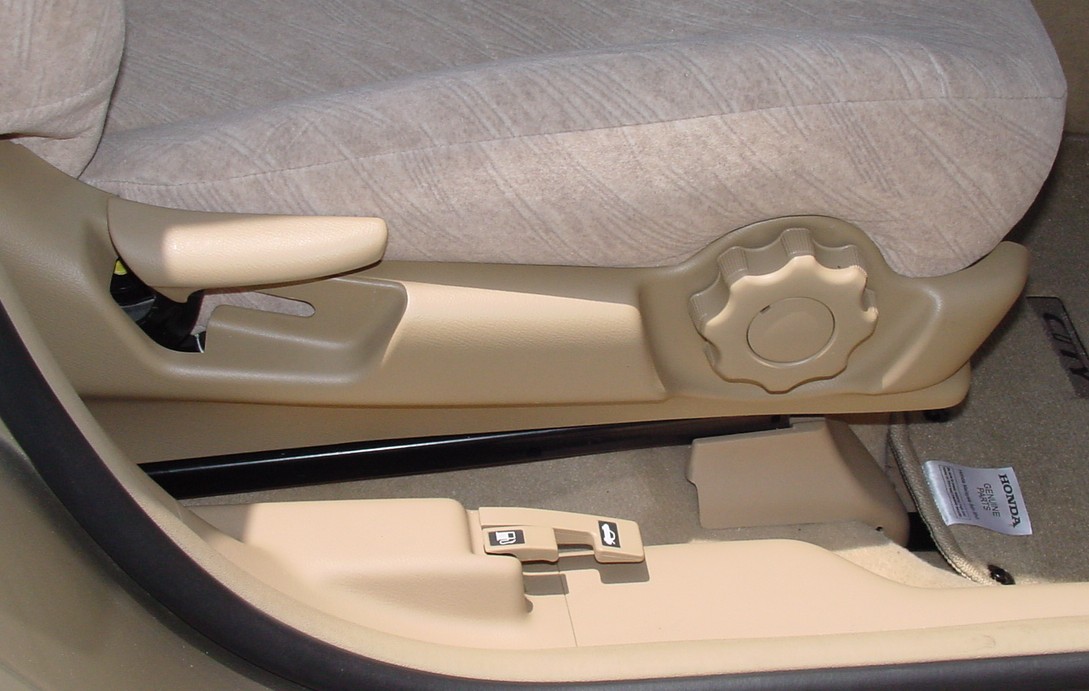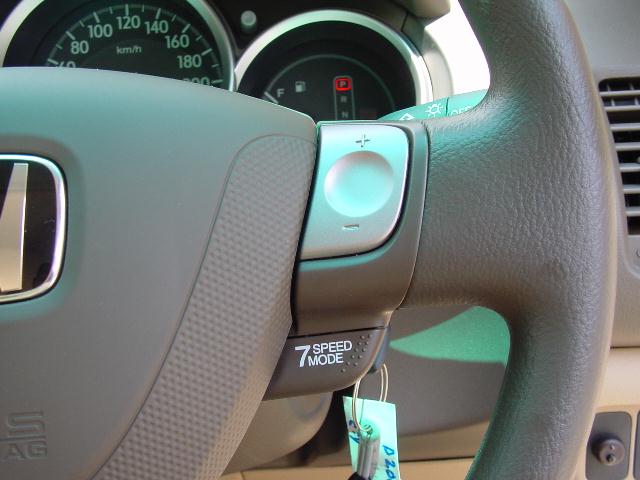Honda City VTEC
City Vs Vios Battle Hots up with City VTEC
The hotly contested battle for supremacy in the entry-level 1.5 class between Honda Malaysia and UMW Toyota took on a new phase with the recent launch of the VTEC version of the Honda City that followed very closely in the wake of the introduction of the Honda Jazz VTEC not too long ago.
The Honda City was initially launched with a twin-spark, lean burn ‘I-DSI’ engine (88 ps) that was primarily designed to provide outstanding fuel economy. At about the same time, the Toyota Vios was introduced with a VVTi engine (109ps) that leaned more towards power. It appeared that there were two differing views as to what motivated the entry-level 1.5 litre car buyer; one went for power, while the other went for fuel economy. Now, Honda is covering both bases by offering a VTEC variant that will sell alongside the I-DSI version. Whilst Toyota offers the same engine, but different trim levels in the two variants of Vios, Honda is offering two different engine specifications.
The VTEC version of the 1.5 litre Honda City has variable valve timing, and 4-valves per cylinder in a SOHC (Single Overhead Camshaft) arrangement. Engine output is a whopping 110ps at 5800 rpm, and torque is 143 Nm at 4800 rpm. In comparison the I-DSI engine of the same cubic capacity produces 88 ps and 131 Nm of torque. Even though the engine output is higher, the VTEC engine can still run on regular unleaded fuel. According to Mr. Takeshi Saitoh, the chief engineer from Honda R&D in charge of the Honda City development, the VTEC is also very economical on fuel. According to him, the VTEC (under controlled test conditions) returns a consumption figure of only 0.2 kilometres less per litre when compared o the I-DSI model. Bearing in mind that most fuel consumption tests are done at speeds nearer to 90 and 100 kph, in real life, the figure is going to vary a little, although it is nice to know that the VTEC will be just as economical if driven sedately. But then, if you are really finicky about fuel economy, just go buy the I-DSI (and save money too).
In a conventional engine without variable valve timing, the engine designers have to make a compromise (at the design stage) as to where in the rpm range they want the maximum drivability to be. This is determined by the camshaft profile. For a family type sedan, design engineers generally opt for putting the ‘meat’ at the mid-range rpm of between 2000 to 4500 rpm, this being the range in which most people drive their cars. Higher performance engines would have the ‘meaty’ part in the higher rpm range, of between 5000 to 7500 rpm. Having a variable valve timing mechanism gives the design engineers more flexibility in the sense that they can now have an engine that not only performs well in the low and mid-range, but at high rpms as well. It is akin to having a standard camshaft and a racing camshaft in the same engine.
With the added horsepower, the City VTEC has some mechanical upgrades. The rear brakes are now solid discs that will stand up to more spirited driving, and the suspension has been beefed up by the addition of a stiffer rear stabilizer bar. Wheel size has been ‘inched up’ form 14 inches to 15 inches. Rims are 6.0J, half an inch wider than the I-DSI rims. Correspondingly, tyre size is 185/55 R15.
On the outside, the VTEC version has a little badge at the rear end, purportedly to let every one you overtake know that you are in a City VTEC. An optional rear spoiler is available, and it does make the rear end look a little better. Five colours are available.
The inside trim remains the same for both models, except for a rev counter that has a higher redline at 6,500 rpm, and a speedometer that goes all the way to 220 kph. Leather seats and V-Kool tinting are option too, for those who want to customize their cars further.
Members of the motoring press were invited by Honda Malaysia to go for a drive up to Bukit Tinggi for a weekend getaway with the new Honda City VTEC. After gathering for breakfast at the Hyatt Saujana in Glenmarie, we were welcomed by Mr. Seiji Kuraishi, CEO of Honda Malaysia, his ensemble of Honda R&D engineers, and his marketing team. As they only had four units of the new City VTEC available, we were split up into two groups; one group of eight were paired up into the four City Vtecs, while the rest were ferried up or drove standard City I-DSI units up. Once at Bukit Tinggi, those who did not get the opportunity to drive up from KL were given a chance to drive the VTEC on a route that took them downhill from Bukit Tinggi to Bentong and back. I was in the initial group that was allocated the cars to drive up to Bukit Tinggi, and I was teamed up with another journalist.
The drive involved some highway driving, and after leaving the hustle and bustle of the city traffic, the ‘official’ route was to use the Karak highway to Genting Sempah and thereafter to take the exit to Bukit Tinggi for the final steep ascent to the hill resort.
Being a little more ‘adventurous’ we opted for the old road to Bentong, and left the beaten path at Gombak to latch on to the more scenic and winding stretch from the Orang Asli settlement to Genting Sempah, a very beautiful stretch of road that was also used for the first tarmac rally about four years ago. At Genting Sempah, we rejoined the Karak highway just after the tunnel.
The nature of our test route did not allow us to check out the top speed of the City VTEC.
The short stretch down the Karak highway after the tunnel was not long enough, and we only managed 180 kph before traffic conditions forced us to slow down. In a previous test with the I-DSI version, we have hit a little above 190 (downhill), and we do not doubt that the VTEC can do that. Acceleration is more urgent in the VTEC than in the I-DSI version. Zero to hundred time trials, unfortunately was not done, because we never had a stretch that was level or long enough. Anyway, we have been promised the car again for a longer test, and we shall report our findings then.
The 7-speed CVT (Constantly Variable Transmission) is retained in the City VTEC. IT transfers power from the engine to the road seamlessly and smoothly. In auto mode, it drives like any other automatic, except that there is no ‘shift shock’ as the electronically controlled box shifts up or down. On the gearshift panel there is a little button marked ‘S’. Depressing this will change the gear change parameters to allow for more spirited driving. There is also an option to change gears manually, using the ‘Steermatic’ push-button controls on the steering wheel. To switch from automatic mode to the 7-speed Steermatic mode or vice versa, simply depress a button, also located on the steering wheel. The difference in the City Vtec’s performance comes, of course, from the additional 22ps Response to throttle is instantaneous, and the City becomes a very ‘nippy’ car that can ‘point and squirt’ in and out of traffic. The CVT is directly coupled to the engine, and as such, there is virtually no transmission ‘lag’.
The VTEC delivers as promised, and we felt the benefit of the additional power when we started the climb up to Genting Sempah. The VTEC ‘sings’ at the upper range of the engine, and the up-rated suspension made easy work of the tight bends as we wound our way up.
The last seven kilometers from the Bukit Tinggi exit to the resort at the top of the hill was the icing on the cake. We shared out the driving so that each of us got to drive at least half of each of the sections. For this last section, I thoroughly enjoyed ‘flying’ up the hill for the three and a half kilometers until I had to hand over the wheel. The City took to it like a duck to water; I found that the car performs best in ‘steermatic’ manual mode. The direct CVT connection actually provides some engine braking to help slow down the car for the sharper bends. The City, being a front wheel drive car, inherently understeers, but going deeper into the bends and doing some trail-braking helps to set up the car to take the corners in a more ‘neutral’ attitude. The rear disc brakes are more consistent under extreme conditions and fade was never an issue.
The City VTEC retails for RM86, 888.000, and is exactly RM5, 000.00 more than the I-DSI version priced at RM81, 888.00. I think the RM5K premium is worth every last sen




